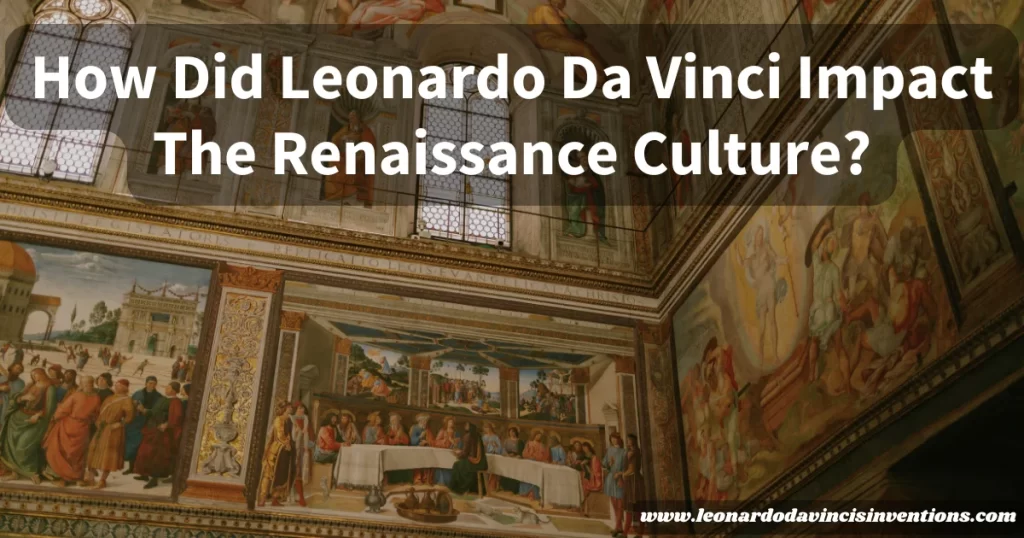
Many people wonder how Leonardo Da Vinci could shape an entire era. It can be difficult to see how an artist affects science, engineering, and city planning, but Leonardo’s story is remarkable.
Leonardo da Vinci transformed Renaissance culture by blending his talents in art, science, and invention. He set new standards for creativity and learning that inspired generations.
Leonardo became known for his famous paintings, experiments, and inventions. His discoveries touched everything from anatomy to architecture, showing how art and science could work together.
If you are curious about how his imagination changed the world, you are about to discover his impact on the Renaissance and beyond.
You will learn about Leonardo’s remarkable contributions. His influence on engineering, architecture, and science inspires artists and thinkers today.
Leonardo Da Vinci as the Ultimate Renaissance Man and Genius
Leonardo Da Vinci’s impact on Renaissance culture went far beyond his art. He shaped science, engineering, and philosophy, bringing the humanist ideal to life through curiosity and invention.
The Humanist Ideal Embodied by Leonardo Da Vinci
Leonardo Da Vinci excelled in many fields, making him the model of the Renaissance man. His life reflected the humanist ideal, focusing on each person’s potential and value.
Leonardo’s interests spread from art and painting to philosophy, literature, and science. He believed that careful observation and a thirst for knowledge led to personal growth.
He used skills from anatomy, perspective, and mathematics to achieve realism in masterpieces like the Mona Lisa and The Last Supper. This devotion to learning inspired others to embrace humanism and creativity.
Leonardo’s Role as an Intellectual Individual and Pioneer
Leonardo Da Vinci’s drive to understand the world led him to pioneer new methods in science and art. He questioned widely held beliefs and tested ideas for himself.
He kept notebooks filled with scientific inquiry and sketches, showing his methodical approach to learning. To improve his knowledge of anatomy, he performed autopsies and human dissections.
This work advanced the understanding of the human body. Leonardo set standards for future generations’ study of nature and medicine by combining observation and experimentation.
How Leonardo’s Natural Genius Shaped Renaissance Values
Leonardo’s natural genius helped shape key Renaissance values such as curiosity, creativity, and innovation. He moved effortlessly between disciplines, using what he learned in one field to enhance his work in another.
This ability to cross traditional boundaries encouraged others to take a broader view of knowledge. He applied artistic techniques like perspective and realism to his art, engineering, and architecture.
Leonardo designed inventions, such as an early version of a helicopter and plans for an aqueduct system. These designs showed the era’s belief in technological ingenuity and progress.
His mindset influenced not just artists, but scientists and inventors as well.
The Legacy of Leonardo as a Multidisciplinary Innovator
Leonardo Da Vinci’s legacy as a multidisciplinary innovator remains strong. He made groundbreaking contributions to engineering, architecture, urban planning, cartography, and scientific studies.
His curiosity brought new ideas to fields such as waterworks and city design. He pioneered the use of detailed sketches and models, which are now standard tools for engineers and architects.
Leonardo inspired a tradition of combining art with science. Later generations of artists, inventors, and thinkers looked to his work for ideas and direction.
The Evolution of Knowledge Through Leonardo’s Interdisciplinary Approach
Leonardo’s interdisciplinary approach played a key role in the evolution of knowledge during the Renaissance. He connected art, engineering, and science by using detailed drawings to explain his ideas in anatomy, inventions, and urban planning.
His interest in cartography led to more accurate maps, and his efforts in observation and experimentation opened new paths in research.
Leonardo helped shape the modern view that learning gains strength from many disciplines by freely moving between the arts and sciences. This spirit of crossing borders and sharing knowledge became the foundation for future innovation.
Artistic Mastery: Leonardo’s Impact on Renaissance Art and Painting
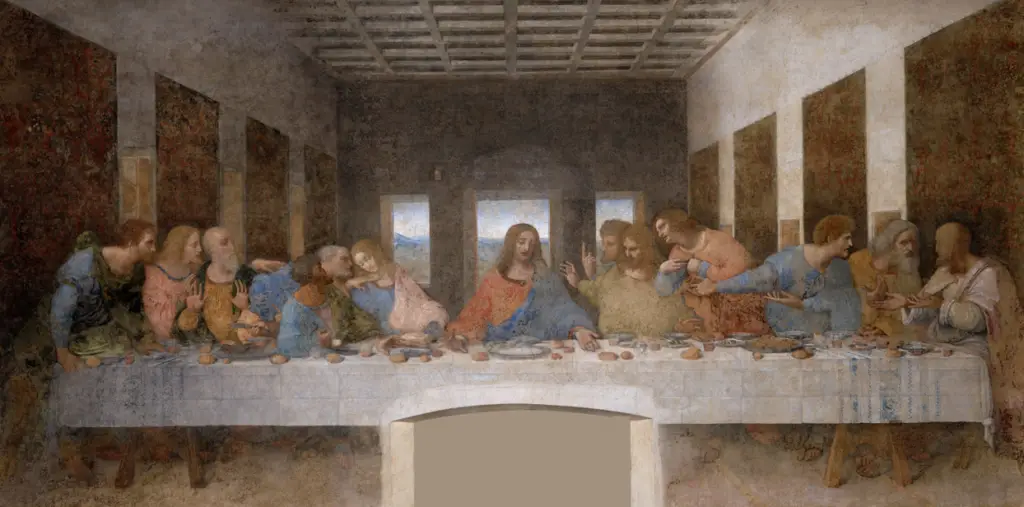
Leonardo da Vinci transformed Renaissance art through skill, creativity, and curiosity. His artistic mastery, innovative techniques, and studies in science pushed the boundaries of art.
He inspired other artists and shaped the future of painting.
The Mona Lisa and The Last Supper: Masterpieces That Define an Era
Leonardo’s most famous works, the Mona Lisa and The Last Supper, capture the spirit of the Renaissance. The Mona Lisa stands out for her mysterious smile and lifelike presence.
This painting highlights Leonardo’s deep interest in human emotion and realism. The Last Supper is a large mural that shows Jesus with his disciples during a dramatic moment.
Leonardo’s use of composition, perspective, and light helps tell the story and fills the scene with life. Both works are seen as Renaissance masterpieces that display the ideals of humanism and the pursuit of reality in art.
Artistic Techniques: Perspective and Realism in Leonardo’s Work
Leonardo’s art was ahead of its time because of his methods. He mastered techniques like linear perspective, which creates the illusion of depth and space in paintings.
This skill helped make works like The Last Supper look as if the viewer is right inside the room. He also developed sfumato, blending colors and edges so shadows and details appeared softer and more realistic.
Leonardo carefully observed nature and the human body, which allowed him to draw and paint accurately. His focus on perspective and realism helped advance the skill of Renaissance art.
Influence on Later Artists and the Broader Renaissance Art Movement
Leonardo became a model for other artists during and after the Renaissance. They learned from his approaches to perspective, anatomy, and the use of light.
His notebooks and sketches showed future artists how observation, experimentation, and creative thinking could improve their work. Renaissance painters such as Raphael and Michelangelo adopted some of Leonardo’s techniques to advance their style.
His impact on the broader art movement can be seen in how art shifted towards more natural depictions of people and landscapes. Leonardo’s vision helped shape Renaissance values of creativity and the humanist ideal.
Creativity and Innovation in Leonardo’s Approach to Art
Leonardo’s inventive mind led him to try new tools and ideas. He used a multidisciplinary approach, linking art with engineering, anatomy, and urban planning.
He often used his knowledge of machines and the human body to find new ways to represent movement and emotion in his paintings. He focused on observing the world closely and experimenting with new ways to mix paint or prepare surfaces.
Leonardo’s creativity and willingness to innovate helped establish him as a true Renaissance man. He made important contributions to art and painting that influenced generations beyond his own.
How Leonardo’s Scientific Inquiry Enhanced His Artistic Vision
Leonardo believed in learning from nature through observation and scientific study. He performed autopsies and human dissections to understand better muscles, bones, and how the body worked.
This knowledge allowed him to portray people more accurately in art. He filled his notebooks with drawings of the human body, plants, and animals, as well as designs for inventions and architecture.
Leonardo brought new life and realism to his paintings by combining scientific inquiry with his art. This interdisciplinary approach showed how science and art could work together, making his work a cornerstone of artistic and scientific progress during the Renaissance.
Leonardo’s Scientific and Engineering Contributions to Renaissance Culture
Leonardo da Vinci advanced Renaissance culture by combining observation and creativity across many fields. His work in anatomy, engineering, mapping, and inventions influenced how people explored the world during the Renaissance.
Anatomy and Autopsy: Groundbreaking Scientific Studies
Leonardo became a pioneer in anatomy through his detailed drawings and studies of the human body. He performed autopsies to understand muscles, organs, and bones, which led to hundreds of accurate sketches.
His work revealed how the human body moves and works and supported the Renaissance value of scientific inquiry. He mixed artistic techniques with careful scientific observation.
He used perspective and realism to show the structure of the body. Leonardo’s notes and sketches became important resources that influenced later anatomists, even though most of his findings did not appear in print during his lifetime.
By focusing on the body’s beauty and function, he helped bridge the gap between art and medicine.
Engineering, Architecture, and Urban Planning Innovations
Leonardo’s inventions and designs revealed his natural genius for engineering and architecture. He drew plans for bridges, war machines, and buildings that showed creativity and innovation.
He devised ideas for self-supporting bridges and advanced machines ahead of his time. Leonardo also designed better ways to improve cities, focusing on urban planning for health and efficiency.
His ideal city layouts included wide streets and sewer systems to support public health. Leonardo became a leading figure in engineering, architecture, and urban planning during the Renaissance.
Cartography and the Evolution of Technological Ingenuity
Leonardo created detailed maps and landscape studies. He used observations from nature and mathematics to make maps more accurate than most others.
He applied perspective and shading to add depth and accuracy. Leonardo made city plans, river maps, and territory diagrams to help military planners and builders.
His maps blended art with science, using new technology and careful observation. Leonardo’s cartographic work paved the way for future mapmakers to create realistic and practical world representations.
Leonardo’s Inventions and Their Role in Scientific Inquiry
Leonardo designed parachutes, early helicopters, clocks, and many other machines. He combined observation and experimentation, using nature as inspiration.
Most of his inventions remained sketches, showing his wide-ranging interests. His notebooks include drawings of gears, mechanical arms, and water-driven devices.
He used inventions to solve problems and test ideas, reflecting the Renaissance spirit of discovery. Leonardo inspired future inventors and scientists, earning a reputation as a Renaissance man.
The Aqueduct System and Other Practical Contributions to Society
Leonardo focused on society’s practical needs. He designed aqueduct systems to bring clean water to cities and prevent flooding.
He blended engineering with natural observation, aiming to improve daily life. Leonardo also created plans for irrigation canals and water-lifting devices.
Frequently Asked Questions
Leonardo da Vinci shaped art, science, and engineering during the Renaissance. His detailed studies blended creativity with observation and inspired future artists, inventors, and thinkers.
How did Leonardo da Vinci’s work impact the Renaissance?
Leonardo advanced the use of perspective and realism in painting, as seen in the Mona Lisa and The Last Supper. He also contributed to anatomy, engineering, and architecture.
His notebooks show ideas for inventions and discoveries in human anatomy and engineering, which impressed his peers and influenced future generations.
Why was Leonardo da Vinci important to the Renaissance Quizlet?
Leonardo da Vinci is often highlighted for his many talents and curiosity. He set new standards in painting, drawing, and scientific study, making him a key figure in spreading Renaissance values.
His ability to connect art and science showed others what one person could accomplish during this period.
How did art impact the Renaissance?
Art during the Renaissance reflected new interest in science, nature, and classical ideas. Artists began focusing more on realism, perspective, and the human body.
This helped people view the world differently and led to advances in anatomy and engineering.
How did the Mona Lisa impact the Renaissance?
The Mona Lisa became famous for its realistic portrait style and mysterious expression. Leonardo’s use of shading and perspective influenced many other painters.
This painting increased interest in portrait art and showed how artists could use new techniques to capture real emotions.
What was Leonardo da Vinci’s biggest impact?
Leonardo’s most significant impact was combining art and science. He studied the human body, drew detailed sketches, and developed ideas for machines ahead of his time.
His inventions and art inspired artists and scientists for centuries. As the Niels Bohr Institute’s article Leonardo da Vinci and the Renaissance explains, his naturalistic style remains vital in art history.
What started the Renaissance period?
The Renaissance began in Italy during the 14th century. Increased trade and contact with other cultures brought new knowledge.
Wealthy families, like the Medici, supported the arts and education, which helped artists and thinkers share new ideas.
Who did Da Vinci inspire?
Leonardo inspired artists such as Raphael and Michelangelo. Many scientists and inventors also studied his notebooks for inspiration.
His work continues to influence artists, engineers, and inventors today.
Which artist most embodied the spirit of the Renaissance?
Leonardo da Vinci is widely seen as the person who best represented Renaissance ideals. Michelangelo and Raphael were also key figures, but Leonardo’s blend of creativity and curiosity set him apart.
He explored many subjects, a trait valued by the era.
How did Leonardo da Vinci’s inventions help us?
Leonardo designed flying machines, early tanks, and water systems. While many of his inventions remained in his notebooks, his ideas showed the importance of observation and design.
These sketches inspired future inventors and engineers to look at problems differently. For more, visit Leonardo da Vinci: Facts, Paintings & Inventions – History.com.
Why does Leonardo da Vinci fit the term Renaissance man?
People call him a “Renaissance man” because he was skilled in many fields. He excelled in painting, engineering, architecture, anatomy, and science.
He wanted to learn about everything. This curiosity made him a perfect example of Renaissance ideals, where people valued knowledge and skills in many subjects.
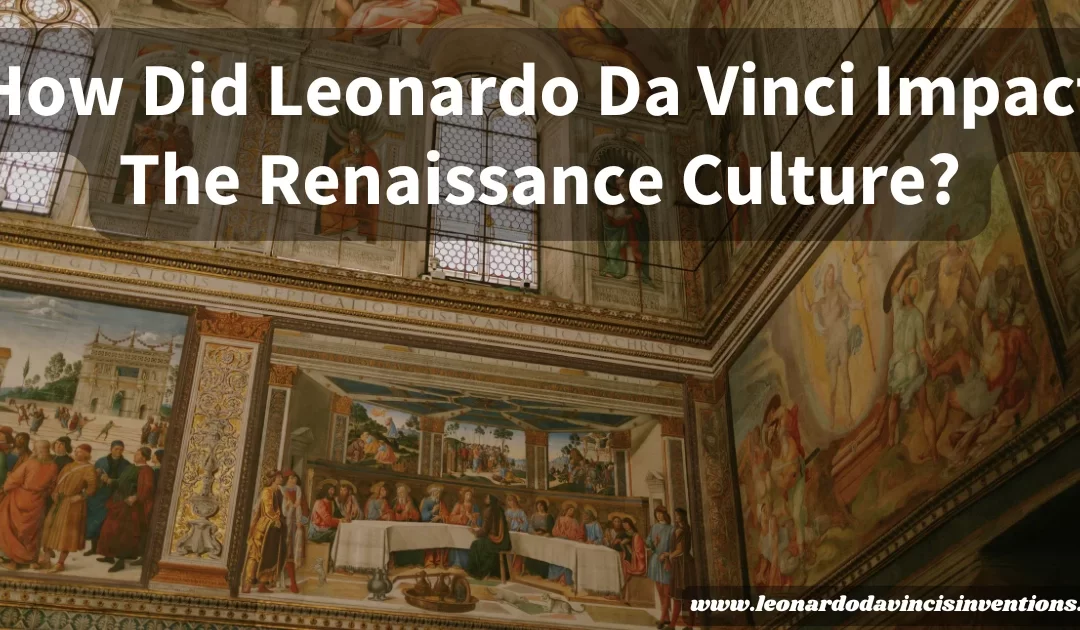

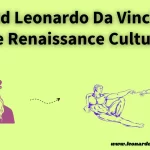
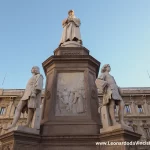
 Leonardo Bianchi,
the creator of Leonardo da Vinci's Inventions.
Thank you for visiting
Leonardo Bianchi,
the creator of Leonardo da Vinci's Inventions.
Thank you for visiting